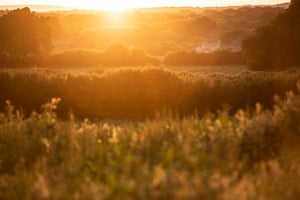Orange tip butterflies jink over grassland and a buzzard mews high on a thermal. Blackthorns burst with bridal white blossom and sallow leaves of peppermint green unfurl. The exhilaration in this corner of West Sussex is not, however, simply the thrilling explosion of spring. The land is bursting with an unusual abundance of life; rampant weeds and wild flowers, insects, birdsong, ancient trees and enormous hedgerows, billowing into fields of hawthorn. And some of the conventional words from three millennia of farming – ‘hedgerow’, ‘field’ and ‘weed’ – no longer seem to apply in a landscape which is utterly alien to anyone raised in an intensively farmed environment.
This is Knepp, a 3,500-acre farm in densely-populated lowland Britain, barely 45 miles from London. Once a conventional dairy and arable operation, at the turn of this century, Knepp’s owners, Charlie Burrell and Isabella Tree, auctioned off their farm machinery, rewilded their land and, as much by accident as design, inched towards a new model of farming. Some view the result as an immoral eyesore, an abnegation of our responsibility to keep land productive and tidy. Others find it inspiring proof that people and other nature can coexist.
A pair of storks circle in the spring sky, great white egrets stalk the waterways and violet dor beetles – previously unseen in Sussex for 50 years – mine the cowpats on the front lawn of Burrell and Tree’s historic, castellated home. The farm employs a full-time ecologist rather than farm labourers these days. Its advisory board of ecologists and other conservationists help analyse the rapid changes to their land and its animals. These changes are almost always uplifting. They used a drone for the first time to count grey heron nests this year and found 24 rather than the 16 of last year.
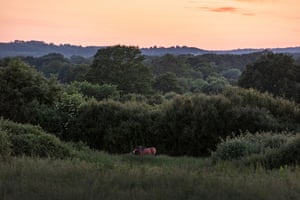
This wild nature helps Burrell and Tree have a thriving glamping site and ecotourism business but they are still producing food from their free-roaming, “rewilded” livestock. “It’s just like ranching really,” says Tree. She has just written a book, Wilding, which tells the story of the Knepp’s transformation, and their own personal transformation too. She met Burrell through mutual school friends when she was 18; he attended agricultural college and then, aged 23, inherited the Knepp estate in 1987. His family have farmed this land since it was a medieval deer park but what sounds like an archetypically privileged aristocratic tale is a little more complicated. Burrell inherited the estate from his grandparents, just after the twin blows of the hurricane that destroyed millions of trees in southern England and the Black Monday stock market crash. The farm is on the famously heavy clays of the Sussex Weald. It’s no coincidence that Sussex folk have more than 30 dialect words for mud, from clodgy to gubber: this poorly draining “marginal” soil sets like concrete in summer and porridge in winter, and will never provide high yields of crops.

For 17 years, Burrell did what the conventional farming world told him to do: intensify, and diversify. Tree quotes Burrell’s aunt: “We were all brought up to believe we would go to heaven if we made two blades of grass grow where one had grown before.” They invested in better machinery, unleashed the latest pesticides and launched their own brand ice-cream. They almost doubled their wheat yields. It didn’t work. After 15 years of farming, they made a cash surplus in only two. Both Burrell and Tree enjoyed wildlife. “We’d go all over the world looking for nature, never thinking about what we were doing to it here, or how it could be here,” says Tree. In 1999, the ancient oaks on their land were inspected by an expert, Ted Green. He told the couple that their trees were in poor health because of their farming system’s ploughing of roots and the destruction of mycorrhizae, a vast subterranean fungal network that is crucial to plant health. His visit, writes Tree, coming just when they realised their farm business was unequivocally failing, was an epiphany.
Nearly two decades on, Knepp is a completely different farm to its neighbours. In fact, after two decades, it is still unique: the only sizeable farm in lowland Britain to rewild itself. Its land is no longer a place of conventional food production. Arable fields have been left to run wild and the way animals and plants have bounced back has been constantly surprising, and rapid. Taking their lead from Dutch ecologist Frans Vera, Burrell and Tree have introduced free-roaming herbivores to mimic the grazing of extinct animals such as aurochs and tarpans. They “farm” 350 head of English longhorn cattle (100 cows and their youngsters), Tamworth pigs, red and fallow deer and Exmoor ponies. Knepp challenges agricultural conventions but also tears up the orthodox conservation rulebook. Rather than set targets to protect specific rare species, their principle is to allow “natural processes” to unfold. So there are no internal fences, and no predator control – to say, stop foxes predating ground-nesting lapwing (a declining bird in Britain) – and no “scrub-bashing” so favoured by conventional conservationists. The uniqueness of Knepp poses three questions. Why did Burrell and Tree do it? Why has no-one else in Britain done it yet? And can Knepp’s success be replicated elsewhere?
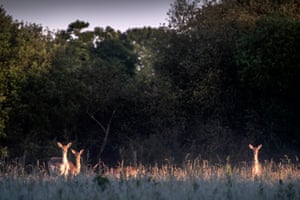
Tree believes the answer to the first question is their unusual personal situation. They both acknowledge their good fortune: Burrell is not a tenant farmer but inherited the estate from his grandparents. Because Burrell was so young when he took over, when he realised conventional farming was failing he was still young and energetic enough to try something different. “Naivety,” laughs Burrell. Unlike many young farmers, because Knepp skipped a generation, he was also not burdened by farmer parents criticising change: intergenerational dynamics are a huge influence on how farmers farm. Tree also believes that because Burrell spent his childhood in Africa and the Australian bush he was familiar with Serengeti-type landscapes, and a vision of free-roaming animals was not an anathema.
Many might assume Knepp has not been adopted by other British farms because it cannot be financially viable for anyone but the wealthiest of farmers. “We’re always going to get this criticism levelled at us – ‘It’s alright for you, you live in a castle and you went to public school,’” says Tree. Tenant farmers or farmers with massive mortgages might not be able to start a Knepp (although Knepp was overdrawn when it changed its farming model) but this is not a self-indulgent hobby. Knepp’s economics are striking. The farm today makes a £50,000 annual profit from one 10-acre field – one-third of the average annual income its entire conventional farm of mixed crops, beef, sheep and 600 dairy cows used to make. “That’s bloody mad,” says Burrell. This magic field is worthless in agricultural terms but sits in a scenic valley surrounded by ancient trees and rewilding excitement, and now features yurts and an outdoor bath for glampers.

In their previous incarnation as an intensive farm, Knepp may have averaged £150,000 a year profit but lost money in all but two years because of endless capital investments in new machinery, such as dairy technology or new slurry lagoons or sewage systems to adhere to new legislation. A wilded farm has much fewer capital demands. Apart from glamping’s £230,000 turnover (not profit) in 2016/17, annual farm incomes totalled £120,000 from selling 75 tonnes of live weight high-grade organic meat, £500,000 from renting former farm buildings to local businesses (attracting 200 full-time jobs to the local economy), and £118,000 from renting seven former workers’ cottages. As Burrell and Tree accept, such lucrative income streams are not available to every farmer; Knepp benefits from its proximity to Brighton and London. Finally, the farm currently receives £220,000 for having its land in the highest level of environmental stewardship scheme and £195,000 in “basic payments” which every British farmer receives via EU funds. As all British farmers know, Brexit is certain to see the end of such generous subsidies.
It may not look like farming but Knepp’s animal husbandry is subtle and complex. Conventional beef cattle reared on silage and grain are slaughtered at 24-26 months; Knepp’s free-range cows are 28-30 months old. (If they are slaughtered over 30 months they are priced less because of old regulations from the BSE health scare.) So in farming terms, “we’re losing four months from a conventional system,” explains Burrell, “but we’ve not had to put any imputs into growing the animals – we’re not making silage, growing wheat, housing them, getting rid of the dung, treating them with antibiotics. We have none of the costs associated with the production.”
The farm’s sole conventional employee is its stockman, Pat Toe. The animals roam wild but cows still need to be periodically rounded up for TB tests and for slaughter – not easy when they are hiding in Knepp’s burgeoning sallow thickets. “Just checking is a massive part of it,” says Toe. “This kind of system doesn’t take much labour but the labour is pretty intense sometimes.”
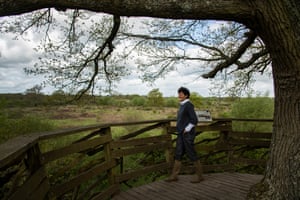
When he arrived 10 years ago, he rounded up the cows on quad bikes. “It’s as near to chasing them as it could be and we just thought ‘no’ - it’s dangerous, and it’s not good for the animals. There were seven of us and we still wouldn’t get them all in.” So Toe watched long and rather tedious videos of American “cow whisperer” Bud Williams, who teaches ranchers how to round up cows simply by walking them. “There’s no running, no hitting with sticks,” says Toe. Instead, subtle movements help start the process, and each herd gathers its members together on its perambulation through unfenced former fields.
Much of Toe’s job is observing animals, assessing their condition, and making sure Knepp’s stock density is just right for the natural food available. While the farm wants to allow “natural” environmental processes to unfold, if they let livestock populations grow too high, the animals will starve in the winter. The land will also suffer – grassy fields become muddy and “poached” while trees are eaten and destroyed. At first, Burrell and Tree worried that there wouldn’t be enough grass for the animals over winter because “weeds” such as fleabane ran rampant in the early years of rewilding. But they discovered how nature is usually self-regulating and weeds, and species that devour them, boom and bust. Also, watching “wild” cows has been a revelation. “What’s extraordinary when you allow animals free reign in the landscape is that you suddenly see their behaviours,” says Tree. “They are endlessly surprising.” The biggest surprise has been to discover the pigs dive into waterways to collect swan mussels to eat. Tree is also amazed by the amount of sustenance that cows browse from trees and hedges, particularly in winter.
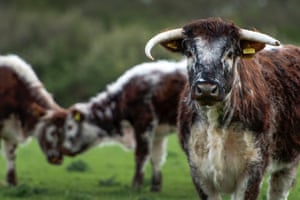
Each February a vet observes the cow’s condition. In 2012, they had to reduce their cows in their northern section by 10% because the herd had rapidly grown too large. If winters are hard, the vets help determine if animals require supplementary feeding. “Natural” starvation isn’t permitted; animals must be slaughtered well before that point. “The key concern, as farmers, is to ensure [herd] numbers are always low enough so that, even in the harshest or wettest winter, the animals can come through it in good condition,” says Tree. Surprisingly, perhaps, even after the latest unusually wet and cold winter, their animals did not require any supplementary feed. Tree has seen what organic farmer Rosamund Young has observed in her book, The Secret Life of Cows: free-ranging animals will “self-medicate” with certain plants if they are poorly, and find alternatives when there’s no grass growing.
While Knepp’s organic meat already has a premium price, Tree believes the basic “organic” label is underselling it. “Nobody knows that it’s free-roaming, self-medicating, conservation project rewilding meat. It’s as ethical a meat as you can get. It’s doing the least possible damage to the animal, it’s positively good for the environment and it’s positively good for us nutritionally because it’s entirely pasture-fed,” she argues. Tree hopes they can create their own brand and sell more meat direct to consumers. Vegetarian campsite guests “will actually eat our meat because all their objections are invalid when they see what we are doing,” says Tree. “Our daughter will eat our meat but she won’t eat dairy.”

Knepp is attracting the attention of both farmers and environmentalists, and Tree’s new book must be unique in receiving glowing endorsements from both George Monbiot, the bete noir of sheep farmers, and James Rebanks, the sheep farmer and author who defends the cultural value of upland farming. Both have visited Knepp. And yet the farm also attracts criticism from all sides too – farmers, traditional conservationists and rewilding purists, who dismiss Knepp as insignificant “rewilding-lite” with its fenced enclosures and absence of apex predators such as wolves. Meanwhile, some traditional conservationists have suggested that Knepp is already “overgrazed”, albeit in a less extreme way than Oostvaardersplassen, the rewilded nature reserve in the Netherlands where herbivores roam free with minimal intervention.
How much livestock can Knepp’s land carry? “We’ve got no preconceived idea,” says Burrell. A conventional farm may put five, six or seven “Grazing Livestock Units” (one modern dairy cow; a lowland ewe is 0.11 livestock units) on each hectare. “Conservation grazing” according to Natural England, the government’s conservation watchdog, should be no more than 1.4 livestock units per hectare. Knepp graze much less than conventional farms, and much less than conservationists too – just 0.3 livestock units per hectare. Burrell has long discussions with Knepp’s advisory board about “overgrazing” in certain areas of Knepp. “It’s always used as a derogatory term, rather than ‘highly grazed’ or ‘tightly grazed’. Ok, overgrazed – for what? Dor beetles love tightly grazed ‘lawns’ but Essex Skippers [butterflies which require long grass] don’t. If you are a botanist and want more flowers you’d say it was overgrazed. The carrying capacity of the land is often much higher than one might think because we’re unused to seeing it.”
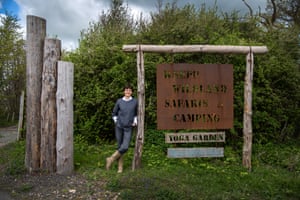
Of the charge that Knepp is not “proper” rewilding, Burrell and Tree never claim that they are. They can’t bring back wild boar which, despite populations re-establishing themselves in the Forest of Dean and elsewhere, are classified as dangerous wild animals in law. They can’t even put a stallion among their Exmoor ponies for fear of scaring the horses that are ridden on public byways through Knepp. “We’re not a big area. we’re not a national park, we’re not a wilderness, we haven’t got apex predators,” says Tree, “but we can still do something really interesting by introducing drivers of change [herbivores] and then letting go.” They would like to introduce more but Burrell even found an innocuous-sounding plan to reintroduce storks was thwarted when some members of Sussex Wildlife Trust opposed the scheme. Knepp has gone ahead and brought in storks anyway, and next hopes to bring back the beaver. Environment Secretary Michael Gove has approved schemes releasing beavers into fenced enclosures to alleviate flooding and benefit biodiversity but beavers are still controversial with many farmers. While conservationists endlessly debate such issues, Burrell and Tree, like all farmers, are ultimately doers. “Of course you want to carry popular opinion with you but when you can see something in the flesh it’s often more powerful than the analytical argument,” says Burrell. “As soon as you see them [storks or beavers] you think, actually, it’s fine.”
To return to the question of whether more British farmers will follow Knepp, landscape change and new species are “scary” says Tree. “People come here the whole time and think, ‘how amazing’ but going back and doing it in your own backyard is a different thing. If a landowner is in a position like us, quite often they have parents who are still alive who think it’s appalling. Partly it’s fear of what the neighbours think. People really mind being criticised. Even just leaving dead wood on the ground, people say, ‘It’s so untidy’. If we’ve grown up having a happy childhood roaming barren hills, seeing it scrub up is very difficult. It’s challenging an aesthetic. Once it happens, you learn to love it but it’s making that leap. So many farmers are on the cusp of doing this. It’s just a little incentive – whether that’s removing the subsidies, or being paid for some ecosystem services to make something a bit wilder.”
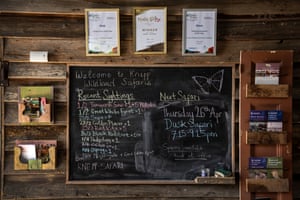
Burrell and Tree firmly believe their model is applicable to other farms, and smaller farms too, but it will depend on whether society is willing to pay for “ecosystem services” such as unpolluted water, flood protection and restored soils provided by truly sustainable farming. In Britain, it will also depend on what sort of farm payments post-Brexit Britain decides it can afford. Environment Secretary Michael Gove’s mantra is “public money for public goods”, suggesting farmers will be rewarded for supporting ecosystem services. Some predict that marginal agricultural land will become “environmental” land while fertile lowland areas will be ever more intensively farmed. But Burrell and Tree hope this vision doesn’t come to pass in Britain. “There has to be nature put back into landscapes which are fertile farming land – it can’t just be the marginal land that gets turned back to nature,” says Burrell. As Tree puts it: “To expect people living in good agricultural land to have no access to nature – everybody should have access to nature.”
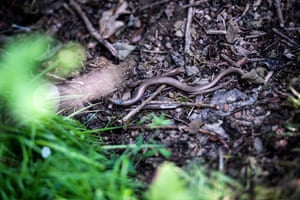
Burrell understands that farmers are sometimes reluctant to embrace wildlife-friendly farming because they fear that regulators will then step in to protect that wildlife. “This has always been aimed at me by farmers – ‘If you turn your land into something good for nature, they’ll screw you. They will stop you ever farming again,’” says Burrell. So his big idea is “pop-up Knepps” with government regulation to support farmers devoting land to wildlife as Knepp as done for a limited period of 25 years. After this period, the restored soil can be turned back to agriculture if required, and the wildlife that has made the area its home can move to another pop-up rewilding project nearby. It’s a super-scale, long-term rotational farming system for nature. Burrell and Tree won’t turn their land back to conventional farming, and Burrell guesses his children won’t either, but he’s pragmatic enough to recognise that some farmers might need to, and it needn’t be bad for nature if there’s replacement land nearby. Perhaps our static conceptions of landscape, farming and nature reserves are outmoded?
Burrell is also interested in GPS fencing – using GPS collars on livestock to create virtual fencing, which graziers in America, France and Norway are already trialling. These could exclude livestock from certain areas for certain periods, mimicking the behaviour of apex predators. Burrell and Tree know wolves won’t be returned to southern Britain any time soon. “We need to rebuild ecosystems so that future generations will be able to choose whether they want to bring back wolves and bears,” says Tree. “The rewilding word is useful shorthand for the layperson – you can say ‘rewilding’ and people have an idea but it means so many things to so many different people. But unlike that little suffix, ‘re’, we’re not trying to go back. The world is so changed we can’t possibly ever go back to the past, if we could even understand what that was. We want to get some dynamism back into the landscape, because that’s where you get all the knock-on effects like soil restoration and water purification. What does seem to be true is that herbivores can kickstart dynamism into the system again, and lift the glider into the sky. Whether it’s cows or beavers, something exciting happens when you get free-roaming herbivores in the landscape again.”
• Wilding by Isabella Tree is published by Picador
